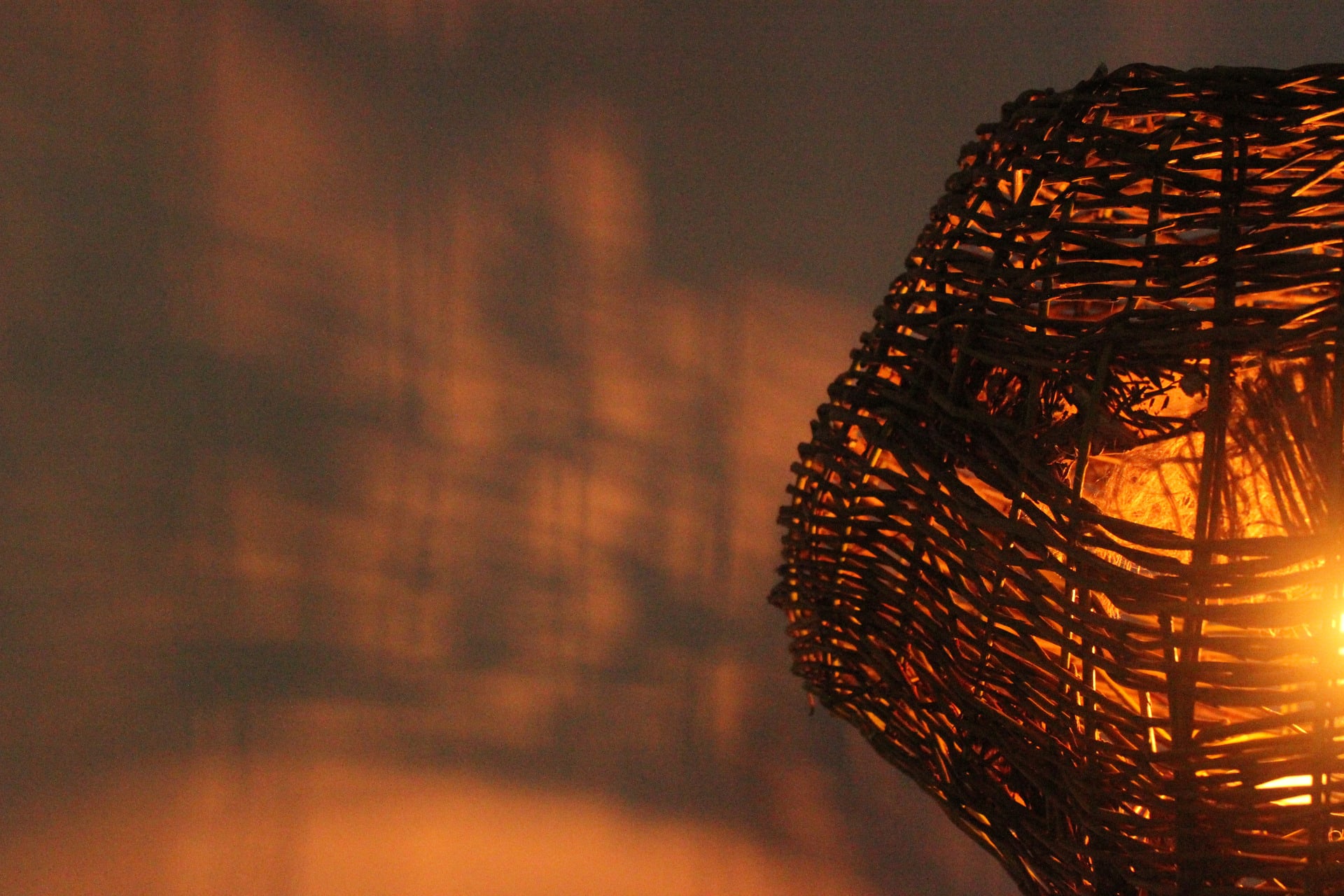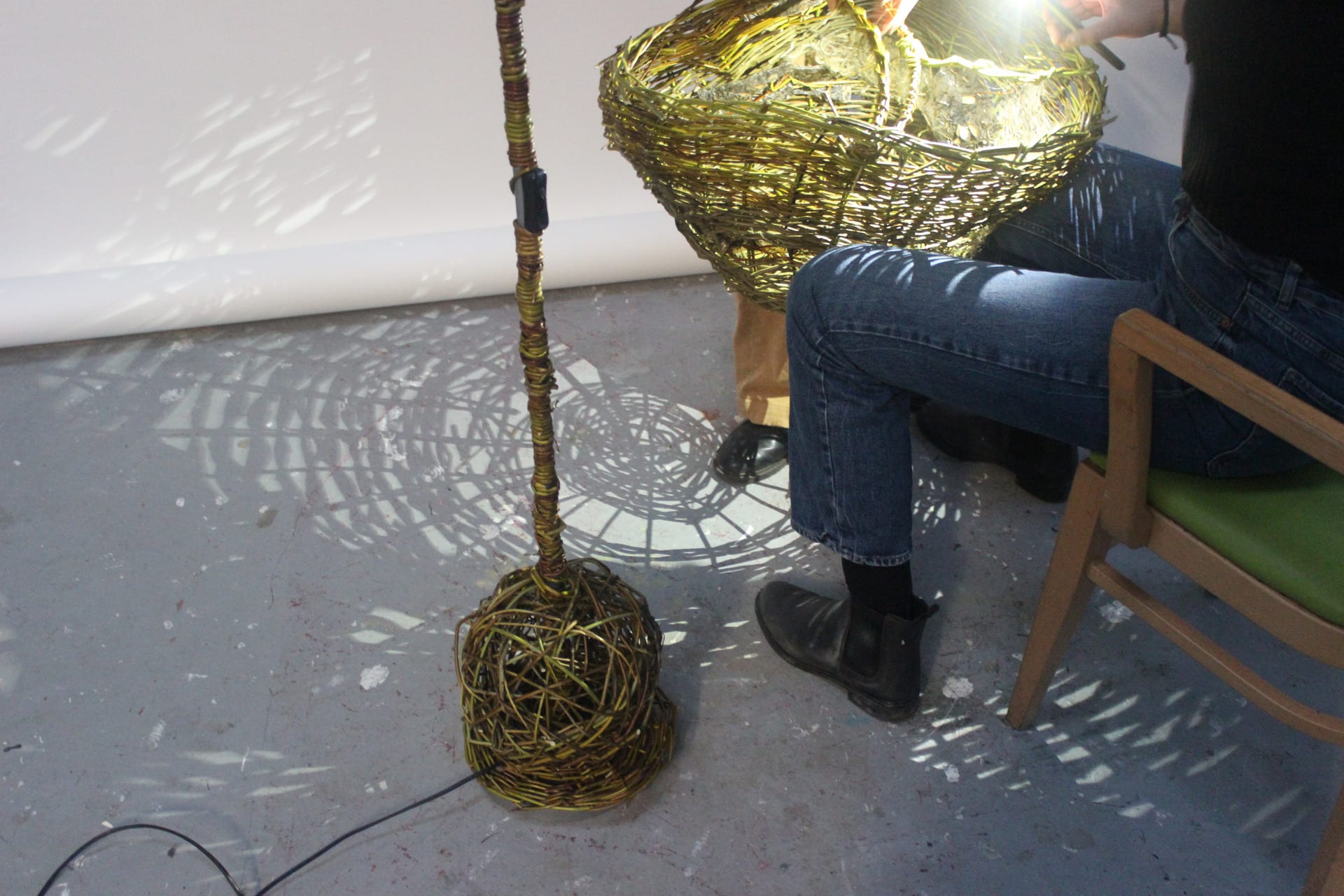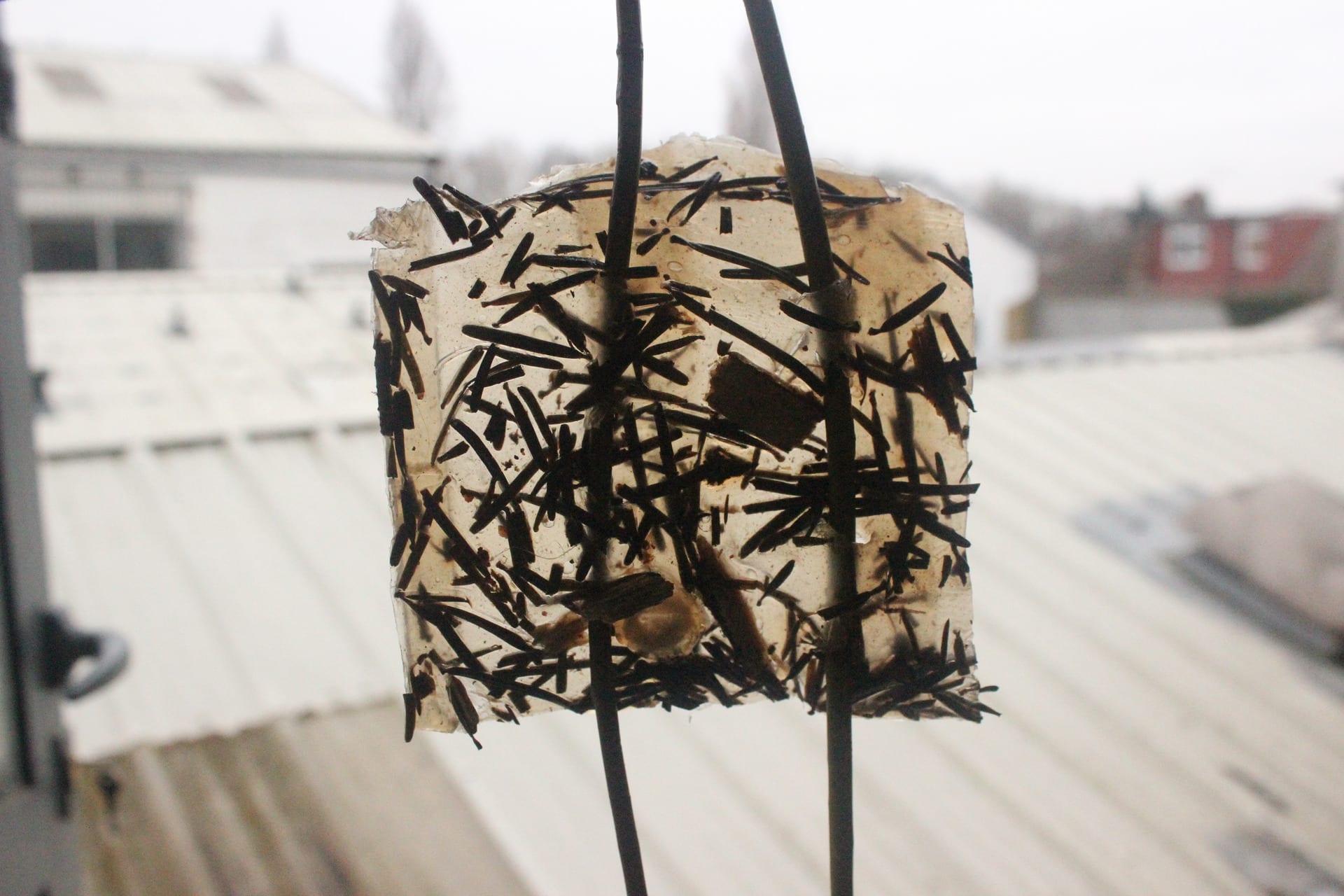As of 2020, the construction industry contributes 38% of all CO2 emissions globally (Neill, 2020), clearly illustrating the wicked nature of the construction industry’s impact on the climate crisis. By focusing on regenerative materials and sustainable methodologies, this has the potential to be mitigated. We intended to study the current landscape relating to the use, practice, culture and industrial infrastructure surrounding the development of natural, bio-based building materials that can be produced in the UK.
Through our individual material interests, our project involves an introspective reconnection with dry leaves, flax, hemp, and willow, all materials that can be grown, sourced and produced in the UK. Through asking questions relating to sustainability, carbon sequestering capabilities, biodiversity and cultural significance, we aimed to create an information-rich research catalogue juxtaposed by an evocative and physical material-led piece in order to contextualise our research. Through visits to farmers and practitioners, we formed a material study document, incorporating interviews, sustainability analysis, material sourcing information, material tests, precedent studies, story based accounts and documentation of our physical work.
As we sought to build an information-rich and evocative material library by posing queries about sustainability, carbon sequestering potential, biodiversity, and cultural importance, we eventually landed on the idea of creating a useable and recognisable indoor element such as a lamp, to highlight the environmental and psychological impact of the switch to a more regenerative future on our everyday lives. It could potentially serve as a model for further investigations into affordable, easily accessible woven materials as alternatives to regular mass-produced everyday items, most of which are made using plastic.
A notable aspect of our outcome is the organic, almost living aspect of the design. We decided to create a lampshade as we felt that the translucent and filigree nature of the woven willow, flax and the agar and pine would work beautifully and evocatively with the distribution of light. We tested it with both cold and warm light.
By studying these materials through both a narrative and material-led focus and a critical, analytical approach, our work explores materials in a simultaneously systematic and anecdotal way. Our material exploration and research blends traditional craft whilst posing questions surrounding technology lead systems. Overall, we aim to inspire new ways of thinking about building with natural regenerative materials.
Neill, P (2020), Construction industry accounts for 38% of CO2 emissions [online] Environment Journal. Available at: https://environmentjournal.online/articles/emissions-from-the-construction-industry-reach-highest-levels/













